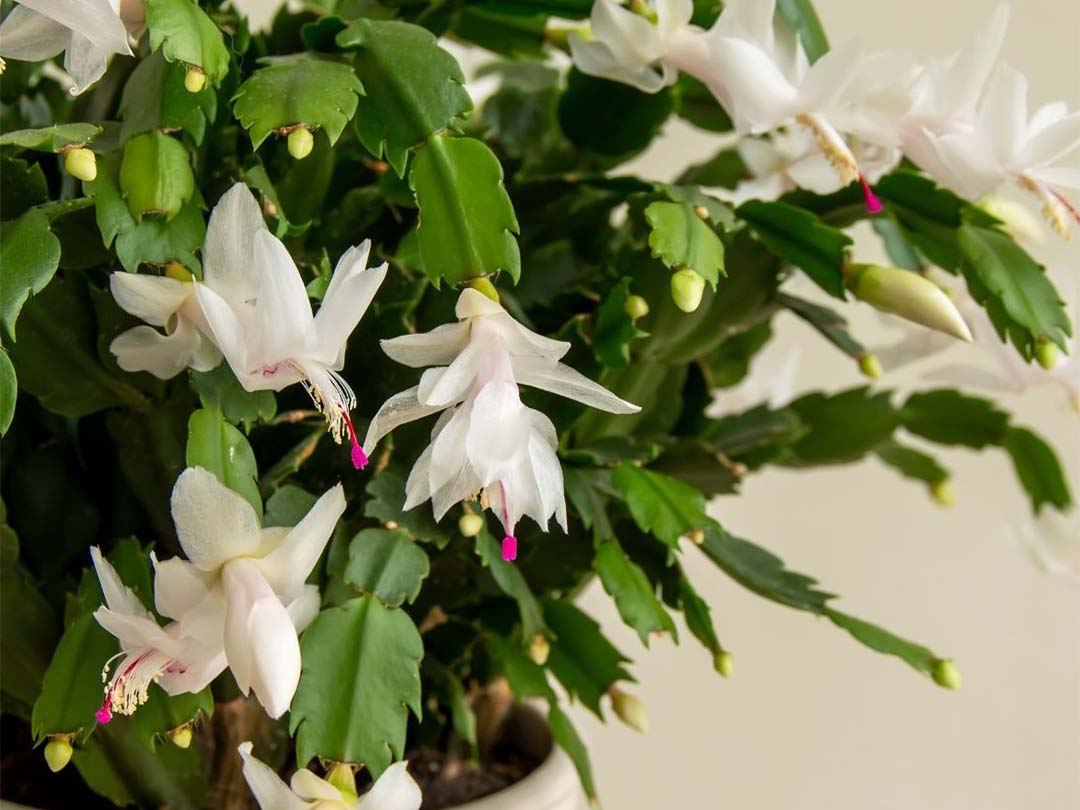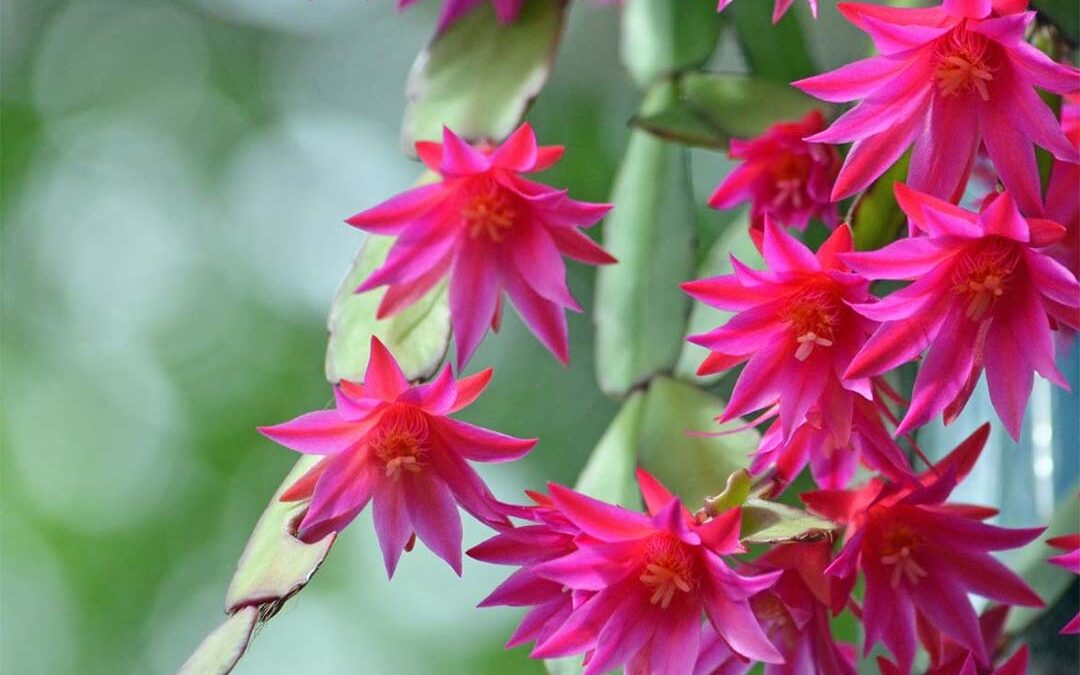As the holiday season draws closer, keep your eyes peeled for a super special cactus that steals the show this time of year: the Holiday cactus.
The colorful cactus you spot in stores are hybrids of the Schlumbergera species, flaunting an assortment of blossoming hues.
Holiday cactus is a common name to refer to both Thanksgiving and Christmas cactus, as each plant has distinct stem segments.
Looking after your Holiday cactus can be easy, but knowing a few of its secrets is key to unlocking its full potential. With some insider knowledge, your plant can flourish and bloom year after year.
Light and Temperature: Growing in the desert, Christmas cactus loves to be pampered in the comfort of a pot. This way, it can be the ultimate mobile plant and hop to new locations with ease! Keep these beauties happy in bright, indirect light and should stay cool in the summer. Find them a shady and cool hangout, perhaps a breezy, covered patio or a bright area in your home. You can also bring them indoors during the toasty months and then shift them outside in October when the chilly nights roll in and the evening nights are longer. Don’t forget, frost is a no-go for them!
Potting Soil: Your desert darlings deserve the best! Choose a premium potting mix made especially for cactus and succulents. Keep an eye out for mixtures that have a blend of compost, peat moss or coco chips, and pumice to help those roots drain like champs. For potting soil to be top-notch, it needs to drain quickly, hold on to some moisture and let you re-moisten it when dry.
Water: Keep the soil slightly damp and water them regularly. But don’t go overboard – soggy soil is a no-go! A moisture meter is an absolute must-have.
Repotting: Don’t go moving your Christmas cactus out of its cozy pot! These plants thrive when they’re snug and secure. If you must re-pot, opt for a size up, for example moving from a four-inch pot to a five-inch pot.
Fertilizer: These plants aren’t big on fertilizer, so go easy with the 20-20-20 fertilizer about 2-4 times per year, between April and September, at half strength. Keep an eye out for salt buildup by flushing the plants with water. And, if it’s the beautiful blooms you’re aiming for, then give the fertilizer a break at least six weeks before the blooming season.

Once the blooming party is over, our plant pals can look like they’ve been hit by a bus. No need to fret, droopy and shriveled stems are a typical side effect after blooming. However, Schlumbergera wilting can be a symptom of root rot or stress. Give the plant a gentle tug, and if it slides out of the pot with ease, the roots have rotted. If your plant’s stem has gone all mushy, slice off those gross bits and give it a chance to sprout new roots in coco chips or in water. The stem cutting should consist of two to five stem segments.
After it has finished blooming, it’s time for less water. Whatever you do, don’t let those roots dry up completely! Instead, spread out your watering schedule and a moisture meter is a handy tool to check the soil regularly.
To keep your Christmas cactus blooming each year, they respond to longer nights and cool temperatures under 55 degrees. These long-night plants must have a solid 12 to 14 hour stretch of darkness.
To avoid premature dropping, it’s best not to move plants while they are forming flower buds. If you need to move them after the flowers have slightly opened, it should be safe to do so.
Check out the Desert Landscape School for online and in-person classes. We’ve got a treat for you! Feast your eyes on our exclusive holiday pricing specials for two of our most sought-after classes.
Drip Irrigation Short Course– $45.00 online
Planting and Maintenance– $250.00 in-person
Special pricing available through December 31st. If you have any questions, please do not hesitate to contact us at dls@dbg.org.

